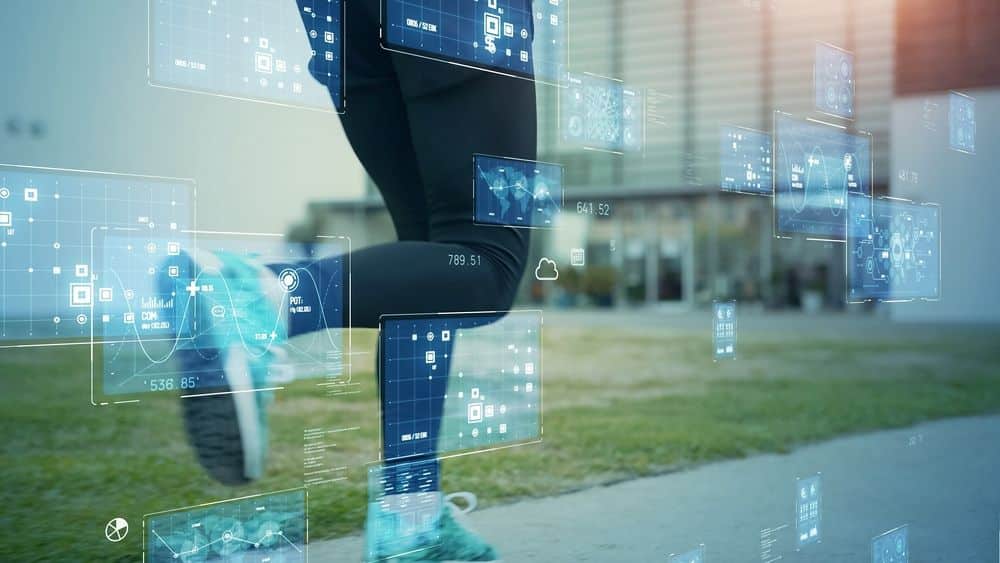
Technology in sports is no longer just an add-on. It has become integral to how games are played, managed, and experienced. Information technology in sports is changing everything from player performance to fan engagement. From real-time data collection to high tech fan apps, IT is now at the center of every major sporting event.
Coaches and analysts rely on data analytics to make better decisions. Professional athletes use wearable devices to improve during training sessions. Fans interact with teams through mobile apps, social media, and even virtual reality. Whether it’s tracking athlete training or managing stadium operations, the world of sports is more connected and digital than ever before.
This article explores how information technology in sports shapes performance, improves the fan experience, and opens up new job opportunities across the sports industry.
How Is Information Technology Used in Sports?
Information technology in sports touches nearly every part of the game. Coaches use video analysis to study plays and review opponents. During training sessions, players wear GPS trackers and smart devices that monitor speed, distance, and heart rate. These tools improve athlete training and help prevent injuries by spotting early warning signs like fatigue or imbalance.
Sports teams and leagues use IT systems to manage schedules, organize practices, and track player statistics. Data analytics plays a major role in scouting talent and adjusting strategies mid-game based on live data. Even referees and broadcasters rely on tech for replays, decision support, and game flow management.
Away from the field, IT drives fan engagement. Apps now display live scores, sell tickets, and let users replay big moments through augmented reality. Stadiums are becoming smarter too—using digital entry systems, cashless payments, and large interactive screens to improve the live experience.
Tech Tools That Are Revolutionizing Sports Performance
Advances in applying information technology to sport performance have transformed how athletes train, recover, and compete. Coaches and sports scientists now rely on digital tools to monitor physical output and shape entire training strategies. These technologies help reduce injury risk, improve player performance, and give teams a competitive edge.
Some of the most impactful tools include:
- Wearable devices like GPS trackers and smart clothing collect data on speed, distance, heart rate, and effort during every movement.
- Motion tracking systems that record how athletes run, jump, swing, or change direction, providing data to correct form or avoid strain.
Smart fabrics that measure hydration levels, body temperature, or muscle activity in real time. - Machine learning software that analyzes performance trends to predict fatigue or injury risk, helping coaches adjust training loads before problems occur.
- Game-day dashboards and tablets that give coaches access to live stats, helping them make quick decisions about substitutions and tactics.
These technologies have become essential not only during training sessions but also during live competitions. Coaches and support staff now make decisions based on real-time feedback, rather than gut instinct alone.
Tech Tools That Are Revolutionizing Sports
Video analysis has become a standard part of performance improvement in professional sports. Coaches and athletes break down clips to better understand what went right or wrong in a play. When paired with data from wearables, video gives a fuller picture of how an athlete performs physically and technically.
Athletes use video to sharpen their timing, improve their mechanics, and correct mistakes. Whether it’s adjusting a golf swing, refining a soccer pass, or improving court positioning in basketball, frame-by-frame visuals help athletes make targeted changes more efficiently.
Practical Applications of ICT in Sport

Information and communication technology (ICT) is a daily part of how sports teams operate. Coaches use virtual platforms to guide athletes who are traveling or recovering from injury. Players and staff use communication tools to review plays, adjust game plans, or share feedback on performances.
Video calls, live stats, and shared digital notebooks help everyone stay connected, even when they’re in different locations. During a sporting event, trainers may send updates to coaches in real-time, helping them make informed decisions about substitutions or tactics.
Fans also benefit from ICT. Live streams, real-time updates, and social media interaction are all supported by information technology. ICT tools make connecting fans with the teams they love easier, turning every game into a shared experience.
In youth leagues, amateur sports, and college programs, the same tools used by professional sports organizations are becoming more common. This helps young athletes get better support and prepares them for the demands of higher-level competition.
IT in Sports Operations and Fan Experience
Information technology doesn’t stop at player performance—it also runs behind the scenes. A sports team uses IT to manage its ticket sales, marketing efforts, and security systems. Many stadiums now run on fully digital ticketing, making entry quicker and safer. Cashless systems let fans pay with their phones or watches, cutting down wait times for food or drinks.
Fan engagement has also reached new levels. Augmented reality features in team apps let fans see player stats by pointing their camera at the field. Some apps include games, contests, or interactive views of plays. These features keep people connected to the action, even if they’re watching from home.
AI chatbots and automated support systems help sports brands respond to fan questions quickly. Teams also use social media tracking to see what people are discussing and to adjust their content accordingly. Some sports organizations are even using digital twins—virtual copies of stadiums—to monitor crowd movement, security, and maintenance.
Sports Information Technology Jobs
As technology in sports continues to reshape professional sports, the demand for skilled IT professionals is growing across the industry. Sports information technology jobs are no longer confined to just big-name teams—they’re also showing up in broadcasting, tech startups, and analytics companies.
These roles support everything from player development to fan experience and stadium operations. Some professionals focus on athlete performance, while others develop interactive tools or manage backend systems.
You’ll find job opportunities in areas such as:
- Athlete performance and tracking – managing wearable tech, analyzing player data, and supporting real-time performance monitoring.
Fan-facing technology – building and maintaining apps, websites, and augmented reality experiences tied to sporting events.
Stadium systems – running digital ticketing platforms, payment systems, and in-venue connectivity. - Media and broadcast operations – supporting live streams, video feeds, and post-production workflows.
Cybersecurity and IT infrastructure – protecting networks, user data, and team operations behind the scenes.
Each role plays a part in how the modern sports industry functions—on the field, in the stands, and online.
A combination of technical knowledge and an understanding of how sports teams operate is essential to succeed in sports tech. These jobs often require comfort with programming languages like Python or SQL, experience in database or cloud systems, and familiarity with video editing or analytics platforms.
For example, if you want to become a data analyst for a team, you’ll need to understand both stats and gameplay strategies. If you’re more interested in fan engagement tools, UX design, and interactive media skills will be valuable. And those working on wearable tech should have a background in hardware integration and performance-tracking systems.
How to Start a Career in Sports IT
Getting started in sports IT means combining technical knowledge with understanding how the sports industry operates. Whether you’re aiming to work with a professional team or a sports tech startup, taking the proper steps early can make all the difference.
Step 1: Build a Strong Technical Foundation
The first step is to gain solid skills in information technology. Studying computer science, software engineering, or data analytics provides a good starting point. Courses that combine sports science with tech are also valuable for those who want to focus on performance-related roles.
Learning programs and tools like Python, SQL, Tableau, R, or MATLAB will strengthen your resume. Many sports tech jobs rely on these tools for data analysis, visualization, and system management.
Step 2: Learn How the Sports Industry Works
You must also understand how sports teams and organizations operate to apply your technical skills effectively. Knowing what coaches, athletes, and staff need daily helps you build tools and systems that make a real impact.
You can do this by reading case studies, exploring real-world examples, or watching interviews with sports technology professionals. Sports management or analytics courses may also help you connect your IT skills to industry needs.
Step 3: Gain Experience and Build Your Network
Hands-on experience is key. Apply for internships or entry-level roles with sports teams, leagues, or tech companies. Many of these positions are listed on sites like JobsInSports.com.
Creating a personal project, such as a sports-focused app or a data dashboard, can also show potential employers your capabilities. Sharing your work through a portfolio or GitHub helps highlight your skills.
Finally, make time to connect with others in the field. Follow sports tech professionals on LinkedIn, join online communities, and attend industry events or conferences. Networking can lead to job opportunities and valuable advice as you grow your career.
Step 4: Stay Current with Technology and Trends in Sports
The sports tech field moves quickly. New tools, platforms, and innovations are introduced regularly, whether it’s advances in virtual reality training, new wearable tech, or updated analytics software.
To stay competitive, make a habit of keeping up with industry trends. Subscribe to newsletters or blogs focused on sports technology, follow significant developments in machine learning and data analytics, and track how professional teams use IT creatively.
Explore Sports Tech Careers with JobsInSports.com

If you’re serious about working in sports technology, JobsInSports is one of the best places to start. The platform specializes in connecting job seekers with real opportunities across the sports industry, including some of the most in-demand and hard-to-spot roles in IT, data analytics, fan engagement, and athlete performance tech.
Whether you want to work behind the scenes with a professional sports team, help design wearable devices for athlete training, or create software that enhances the fan experience during a sporting event, you’ll find listings that match your interests and skill set. JobsInSports doesn’t just offer job postings—it provides tools that make your job search easier and more effective.
You can set alerts for new roles, get tips on building a standout résumé, and even learn how to position your experience if you’re new to the sports world.
As technology continues to revolutionize sports, new job opportunities are emerging at a faster rate than ever. If you’re ready to be part of that movement—whether in virtual reality, augmented reality, data systems, or live event technology—Jobs In Sports gives you a front-row seat to the future of sports tech.





